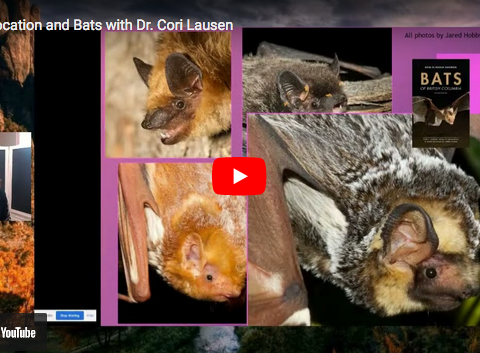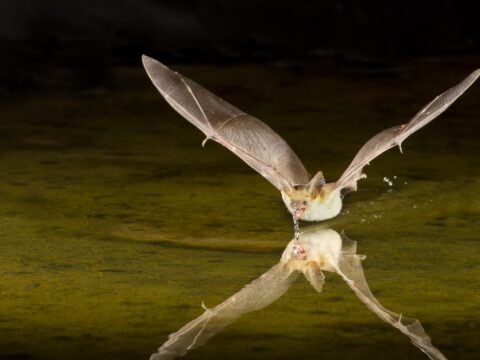Bats of British Columbia
How do humans depend on these remarkable flying creatures?
Vampires, Halloween and haunted houses—these are some images that might come to mind when you think about bats. But as creatures of the night, bats get a bad reputation. They are often seen as blood-sucking, disease-carrying animals. Because they are active at night, we don’t often see them and so may fear them. However, we might instead consider how much we depend on these remarkable flying creatures.
There are about 1400 bats species in the world that provide a variety of ecological services. Insect-eating bats, like the ones we have in BC, catch moths, flies and beetles using echolocation. They are natural pest control for crops and forests. For example, little brown myotis can eat as many as 600 mosquitoes per hour! In some areas of the world, bats play an important role in pollination and seed dispersal by eating fruit and nectar. Contrary to common myths, only three species of bats drink blood, mainly targeting livestock like cows and horses. Far from evil, these bats help each other out by sharing regurgitated blood meals.
Bats are the only mammals that can fly. Females usually give birth to a single pup each summer, making their reproduction the slowest of all small mammals. Bats also have long lifespans of up to 40 years, and have been studied to better understand longevity in humans. Even the saliva of vampire bats can be used to make a clot-busting medicine to treat strokes in humans!
In BC, there are more than 15 species of bats, which are described in the Royal BC Museum’s new handbook, Bats of British Columbia. Dive into the darkness to learn more about the unique traits and abilities of these bats! Let curiosity and wonder guide you as you explore the mystery of bats in BC.




